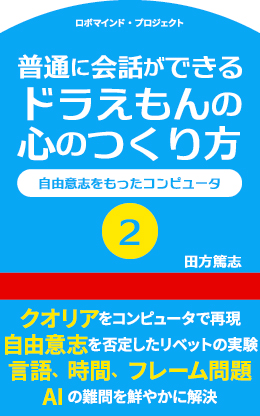
A Surprising Result Found After Examining What Owns Consciousness Based on the Definition of Consciousness
A Surprising Result Found After Examining What Owns Consciousness Based on the Definition of Consciousness
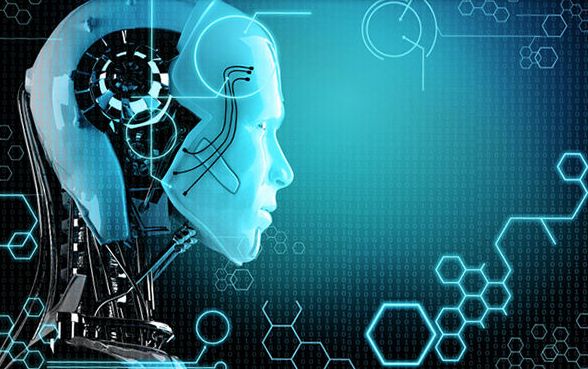
ROBOmind-Project proposes the following conditions for qualifying as a system of mind with consciousness.
Here, a system of mind refers to the kind of mind that possess the same functions as we human beings’, and consciousness is one of the compartments of a system of mind.
Here are six conditions required for being a system of mind.
①Is capable of perceiving the external real world.
②Is capable of building an internal virtual world from the perceived real world.
③Consciousness identifies the real world via the virtual world.
④Consciousness simulates the real world by controlling the virtual world.
⑤A system that possesses the above-mentioned conditions from ①~④ is a system of mind, and systems of mind communicate with one another.
⑥A system of mind shares the common cognitive patterns and anything that can be communicated is converted into cognitive pattern.
Here are detailed explanations of each conditions.
Condition ① refers to the act of perceiving the external world using sensory organs such as eyes and ears.
In order to comprehend the external real world, a system requires some sort of sensors.
Moreover, the external real world is the only world which is shared by different systems of mind.
Condition ② and ③ represent the biggest feature of the ROBOmind-Project.
For more detailed explanation, please refer to “Hypothesis: consciousness’ virtual world-everything you see is a fantasy”. In summary, this hypothesis recognizes that consciousness does not directly identify the real world – instead, it re-constructs a virtual world inside from the real world. Through the internal virtual world, it identifies the real world③.
Therefore, consciousness cannot perceive the real world directly.
Yet consciousness is unaware of that and is under an illusion that it identifies the external real world directly.
The answer for the question – why does consciousness have to use the virtual world to perceive the real world – is the condition ④.
We humans can ponder about an apple in front of our eyes like ”should I eat it now” or ”should I eat it in the tomorrow morning”.
We are only able to do this so long the subject matter in front of our eyes or not in front of our eyes is something imaginable inside our head.
If we were only able to directly perceive the real world in front of your eyes, we would not be able to imagine anything other than the real world in front of our eyes.
That’s when we build a virtual world inside our head so that we can control anything on the virtual world, making it possible to freely imagine.
This enables our ability to imagine the future that is yet to happen, or to recall the past that has already happened.
A mind is qualified as having the same consciousness as human’s by possessing the functions from ①~④.
As long as they have a virtual world on their own, they can re-construct that the other is saying on the virtual world which allows them to understand that the other is trying to say – and this is how communication works.
To make communication work, one needs to understand what the other is saying. To do that, one needs to be able to picture the same thing inside the head that the other is picturing inside their head.
Conversely, as long as they can communicate with each other, you could tell that the other possess the same kind of system of mind.
In return it also indicates that, only those with a system of mind can determine whether the other possess a mind or not.
Hence, the possession of a mind cannot be determined objectively; rather, it can only be done among those with a system of mind. I call this group with a system of mind the ecosystem of mind”(please refer to “The Turing Test and The System of Human Mind”).
This is the meaning behind ⑤.
”Cognitive patterns” in ⑥ refer to emotions and such. Something to deliver in communication are converted into cognitive patterns – like I was happy or I was sad.
Those with the same system of mind possess the same set of cognitive patterns. So, to understand what the other is trying to say is to assume which cognitive pattern the other is referring to.
Now based on the definition of a system of mind, I would like to determine whether the following systems possess consciousness.
First, let’s think of the most simple system, ”thermostat”.
A thermostat turns on / off according to a change of the temperature, a very simple system.
As thermostat possesses the function to perceive the external world(the temperature), it passes the condition ①.
However, it does not possess anything besides ① so we cannot say that thermostat has consciousness.
Which sounds obvious.
Next, let’s think of “dogs”.
Dogs have eyes and ears to perceive the external world, it passes ①.
But, we cannot say they have what ② requires – the virtual world.
The reason is explained in the post ”What Does It Mean? : To Identify A Three-Dimensional Space” so I’ll briefly introduce it below.
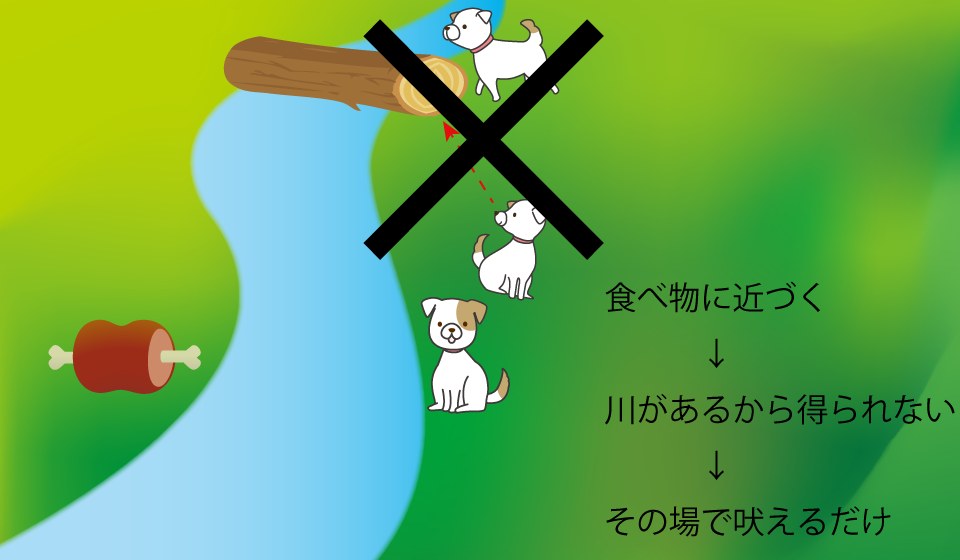
When a dog notices meat on the other side of the riverbank, it wants it. But because it cannot cross the river, it barks.
However, if you look at it closely, there is a bridge a bit far away from the dog. If it cross the bridge, despite the detour, it can obtain the meat on the other side of the riverbank.
Yet, a dog will not cross the bridge even if it notices it. It will continue barking at the meat in front of its eyes.
This is because, to picture a scenario to cross the bridge, one needs to have a map inside their head.
This is the reconstruction of the real world inside one’s head, a virtual world.
One can freely control what is on the virtual world inside their head, so it can picture the scenario to obtain the meat by crossing the river despite the detour.
However, dogs are only programmed to get closer if they see food, they cannot picture a way to cross the bridge in the first place.
This program ”to get closer to food if one sees it” is the perfect example of direct perceptions of the real world.
Without the concept of the virtual world, dogs cannot have the functions from ②~⑤ either. Hence we cannot say that they possess consciousness.
But, dogs get happy if fed meat, and dogs get angry if snatched away of meat that they are eating.
This is an indication that they possess the same set of emotions as we humans, like happiness and anger.
In that sense, they possess ⑥ cognitive patterns so to an extent of what human’s cognitive patterns are, they are capable of communicating with humans.
The next example is a shogi (Japanese chess) playing robot.
A shogi playing robot has a camera to film the board, a brain to come up with the next move, and a robot arm to move pieces according to the next move.
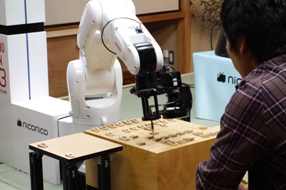
A shogi playing robot recognizes the shogi board, which is the real world, so it passes ①.
The brain of a shogi playing robot comes up with the next move after having thought through some moves ahead.
This can be done because it goes through different scenarios on the virtual board beforehand.
So it can be said that it possess a virtual world, which is a re-constructed version of the actual board in real life by computer.
Then, it passes ②.
While the brain of a shogi playing robot comes up with the next move from the current board, the board inside the brain is not the image taken with its camera; it is a board that is placed in a virtual board by extracting pieces from images.
Hence, what a shogi playing robot perceives is not the real world itself, but a virtual board that has been re-constructed from the real world.
From this, it also passes ③.
In addition, as it simulates on the virtual board, controlling pieces, it passes ④.
A shogi playing robot can play against one, it can also play against a human being with the knowledge of the rules of shogi.
To play in a game indicates the ability of communication through the board in the real world, it passes ⑤.
In a game, it shares not only the rules of shogi, but also the winning patterns and strategic patterns with the opponent.
This is how it reads what the other’s thinking from the other’s moves.
This can be seen as communicating through each other’s cognitive patterns – so it passes ⑥.
From the above facts, surprisingly, a shogi playing robot is qualified to possess consciousness.
What a surprising result.
Now, what is the difference between the mind of a shogi playing robot and that of human’s?
That is, the structure of the real world, as well as the virtual world which is a re-construction of the said real world.
The real world of a shogi playing robot has the board, 40 pieces and the rules of shogi.
These are its only possessions, so it can write everything on the real world.
It can precisely replicate the real world inside computer as a virtual world.
However, the real world we humans live in is much more complicated than that.
There are diverse range of stuff and people.
Not to mention complex relationships between people that are invisible.
To re-construct this sort of the real world is almost impossible.
But, that does not mean the virtual world is incapable of replicating the real world precisely.
Our purpose is to create a system which can have a natural conversation with humans.
In short, as long as it can understand what the other is trying to say, it will not respond some nonsense; it can hold a meaningful conversation with the other party.
Current chatbots are incapable of doing this and that’s why they can’t hold a proper conversation.
What the other is trying to say are converted into cognitive patterns.
Therefore, to create a system that can have a natural conversation with humans, we don’t have to have it the re-construct the real world precisely; all we need to do is to model the real world so to help it extract cognitive patterns and build a virtual world.
In essence, all it needs to is to re-construct a simplified version of the real world by mainly using cognitive pattern.
As long as we can make this happen, we can actualize a system that can have a natural conversation with humans.
The next aim for AI after deep learning is clear.
To model the real world by mainly using cognitive patterns.

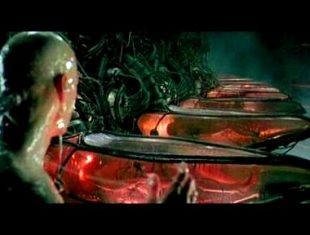 Hypothesis: consciousness’ virtual world
Hypothesis: consciousness’ virtual world The Turing Test and The System of Human Mind (Ecosystem of Mind)
The Turing Test and The System of Human Mind (Ecosystem of Mind)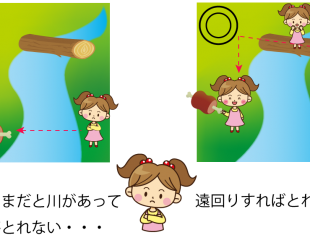 What Does It Mean? : To Identify A Three-Dimensional Space
What Does It Mean? : To Identify A Three-Dimensional Space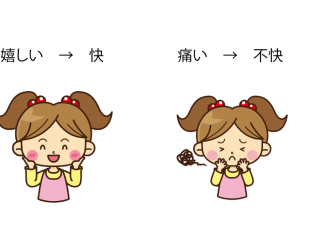 What Are Emotions ? What is A Cognitive Pattern?
What Are Emotions ? What is A Cognitive Pattern?
